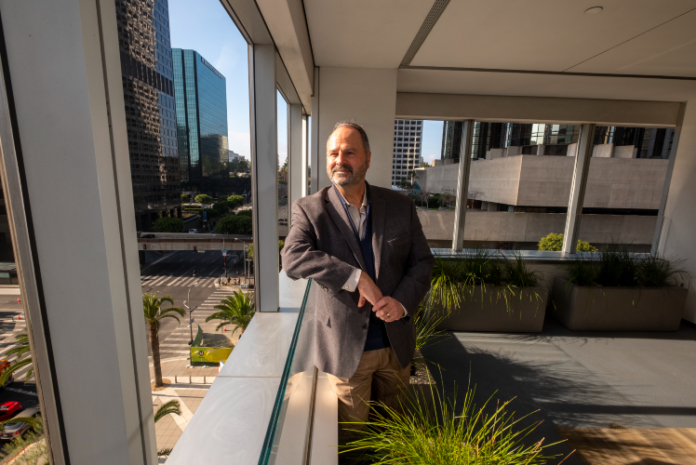Over his decadeslong career, he has developed, entitled or redeveloped more than 30 million square feet of mixed-use property space. Before co-founding Coretrust, Ricci held leadership roles with Maguire Thomas Partners and Thomas Properties Group Inc.
Coretrust, which also owns properties in Philadelphia and Fairfax, Va., is focused on targeting office and Class A assets in major metro areas. The company completes value-add capital and operational improvements at properties as well as adds tenant amenities in some cases. Its repositioning strategy also includes improving a building’s architecture, environmental systems and branding.
Ricci sat down with the Business Journal to discuss his career, what it took to start CoreTrust and the future of office space.
How did you get interested in real estate?
How did you get interested in real estate?
Why work for a developer and not an architecture firm when you entered the private sector?
Why work for a developer and not an architecture firm when you entered the private sector?
What happened when Maguire and Thomas split?
What happened when Maguire and Thomas split?
At that time, myself and one of my other partners, Randy Scott, who I had been working with since 1987, joined Jim Thomas in the split. So, we never really left the company. …
Our third partner at Coretrust Capital Partners is John Sischo, and John joined us in the ‘97, ‘98 time frame at Thomas Properties Group initially as our chief investment officer. …
From ‘98 to 2004, we were privately held and had worked on a number of interesting projects at that time.
We developed a joint venture partnership relationship with CalSTRS initially where we jointly invested with them and acquired assets for them and we developed the first large-scale high-rise LEED platinum building in the world.
In 2004, we went public and continued to grow the company. … Then, the Great Recession hit, and the world pretty much changed.
We were able to stay in business through that difficult period of time and didn’t lose any of the assets, but there was a reshuffle in the real estate industry. One of the investors, partners that we had acquired some of the assets with at the time was Lehman Brothers Inc., and of course, you know what happened to them, which created a very difficult time for us in dealing with the assets we owned in conjunction with them.
Why start Coretrust?
Why start Coretrust?
It was at that point that we decided that we would stick together and start Coretrust Capital Partners. … We raised our first fund of about $290 million from seven pension funds in 2015 and started acquiring assets in 2016.
What do you do with the properties you acquire?
What do you do with the properties you acquire?
Why buy versus build from the ground up?
Why buy versus build from the ground up?
Coretrust has properties in downtown and Pasadena. What interested you about these properties?
Coretrust has properties in downtown and Pasadena. What interested you about these properties?
What areas are you interested in outside of L.A. and what factors do you look at when looking at new markets?
What areas are you interested in outside of L.A. and what factors do you look at when looking at new markets?
Probably not New York City unless we were brought there with an investor only because it’s such a large market to try to break into, maybe the same thing with Boston and Chicago. Florida is interesting. … There’s so many different markets in Florida that there’s not one that institutional investors say, “Oh, we’ve got to be there.”
Another thing that drives our decision is, it’s great to buy an asset, but you also have to have an exit strategy. … Pension funds and insurance companies and advisers and high-net-worth individuals and families, they want to know that they can get in, and they can get out.
In addition to the assets we own and operate, we are also asset managing for institutional investors, offshore pension funds who we don’t co-invest with them, but we act as their adviser in the states in terms of assets they may be looking to put money into. … That’s a business that we’re looking to grow as well in addition to raising capital and investing on behalf of investors.
What does the future of office real estate look like?
What does the future of office real estate look like?
We’re starting to see more and more companies stress a desire for their employees to return to the workplace.
Our thesis has been, “Let’s create the best possible environment for our tenants to operate in, let’s amenitize it in a way that’s top notch compared to other properties we are competing with, and focus on leading-edge technology in terms of health and wellness and safety.”

